Marsh Wrens are tough photo subjects.
They’re the epitome of a bird that’s “more often heard than seen” because they’re almost constantly calling (some call it singing but for me that’s a reach) but they typically stay buried in their preferred habitat of cattails and bulrushes. Even when one comes out where you can see it, all the nearby reeds usually throw annoying shadows on the bird and they’re so twitchy and fast they’re usually gone before you can get them in your viewfinder, much less in focus.
But I’m a glutton for punishment so I try anyway.
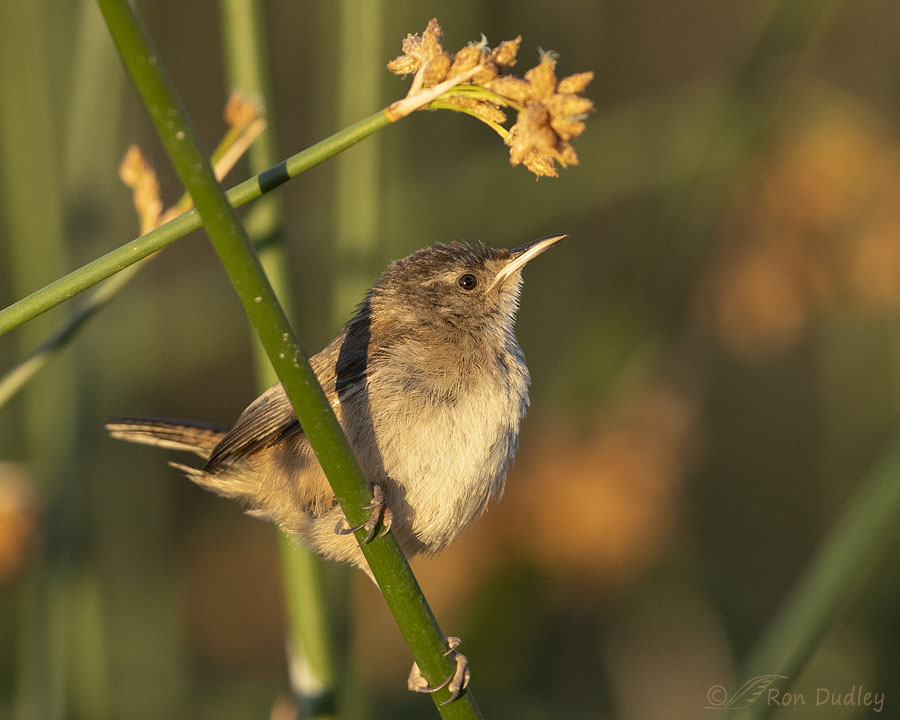
1/2000, f/5.6, ISO 1600, Canon R5, Canon EF500mm f/4L IS II USM + 1.4 tc, not baited, set up or called in
Two days ago at Bear River MBR this juvenile Marsh Wren eventually, after a very long wait, came out where I could see ‘him’. I like the setting and the early morning light but I’m not so fond of the shadow running up his side.
After a few moments he…
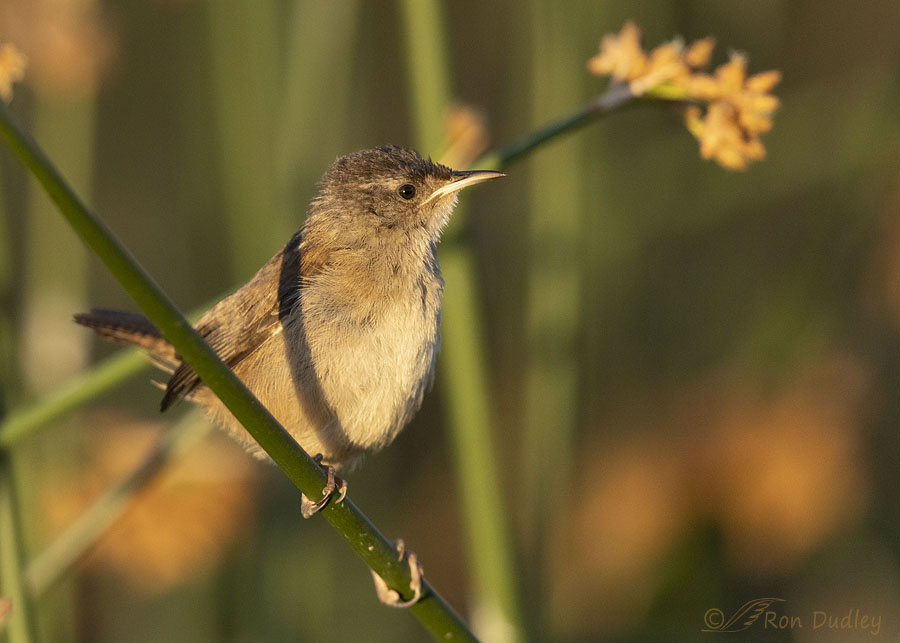
1/2000, f/5.6, ISO 1600, Canon R5, Canon EF500mm f/4L IS II USM + 1.4 tc, not baited, set up or called in
moved further up the stem but that only made the shadow worse. Much worse. After this photo was taken, another photographer drove up behind me so I had to move my pickup to let him by. When I came back the wren was nowhere to be found.
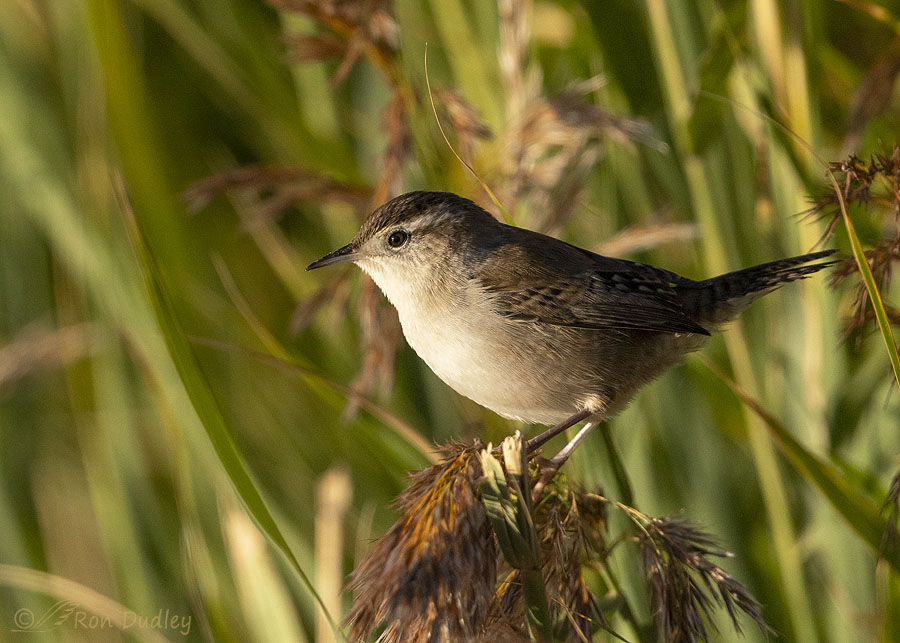
1/5000, f/6.3, ISO 1600, Canon R5, Canon EF500mm f/4L IS II USM + 1.4 tc, not baited, set up or called in
25 minutes later at another location I found this adult Marsh Wren completely out in the open with no shadows from vegetation on ‘his’ body. Even though he was side lit I had high hopes for takeoff and flight shots from this bird because the direction he was facing seemed to be clear of vegetation and I had plenty of shutter speed for action shots.
So beginning with this shot I made sure I had plenty of room in the frame to the left for him to fly into and fired off a short burst in the hope that my timing would be right.
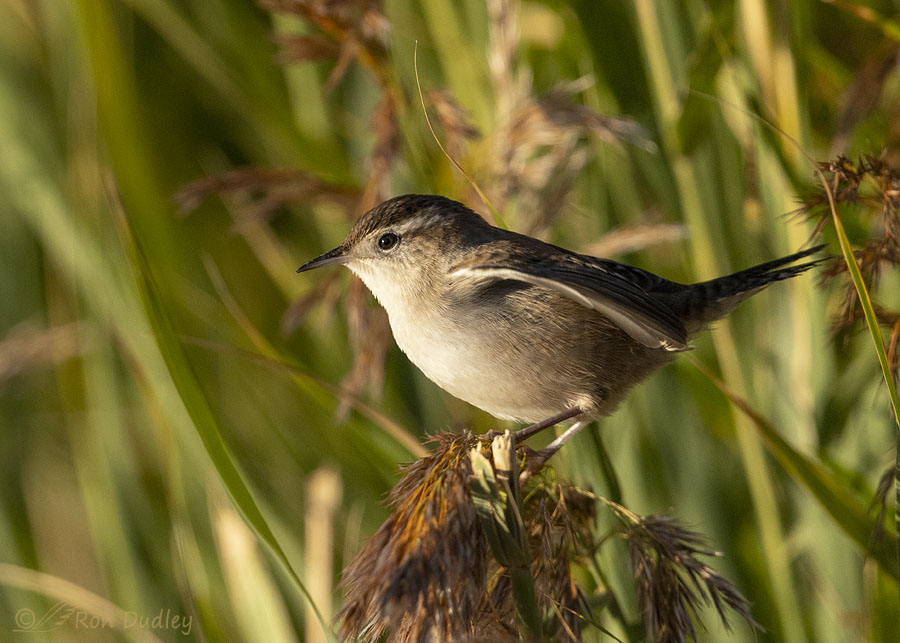
1/5000, f/6.3, ISO 1600, Canon R5, Canon EF500mm f/4L IS II USM + 1.4 tc, not baited, set up or called in
It was. In the next shot in the burst he’s starting to raise his wings at the beginning of takeoff.
But something went wrong with the next photo, the takeoff shot. Given what you can see in this photo, can you guess what it was? HInt: it had little to do with the bird and more to do with the setting.
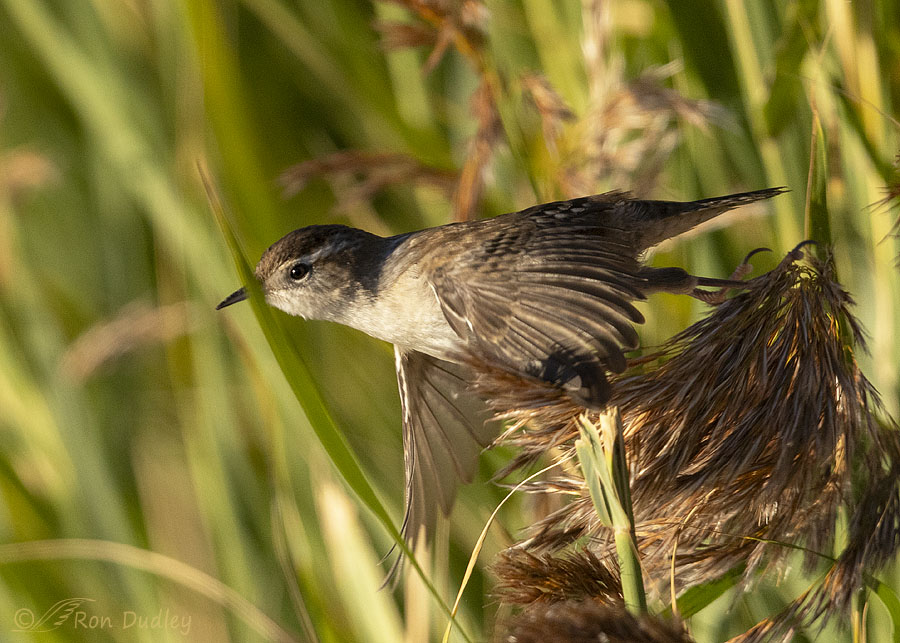
1/5000, f/6.3, ISO 1600, Canon R5, Canon EF500mm f/4L IS II USM + 1.4 tc, not baited, set up or called in
I hadn’t even noticed that narrow leaf in front of him and of course, it ended up right in front of the base of his bill and ruined the shot. When I quickly looked at the photo on my camera screen I didn’t notice it either so I was excited about this shot during the long drive home, only to be disappointed when I got there.
So, you may be wondering. Since I had plenty of room in the frame to the left, did I get a flight shot of this bird?
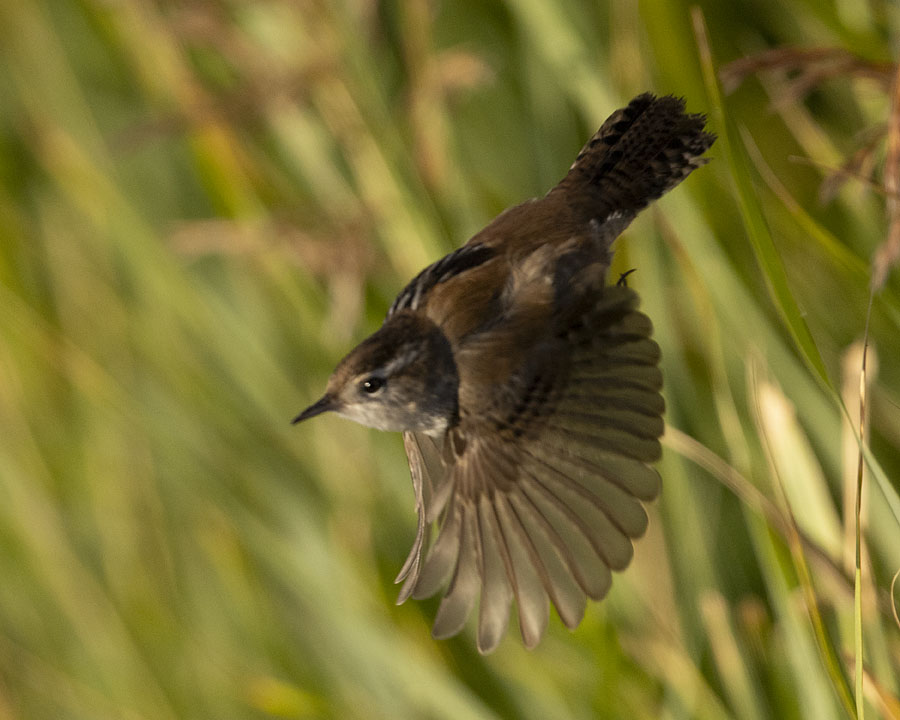
1/5000, f/6.3, ISO 1600, Canon R5, Canon EF500mm f/4L IS II USM + 1.4 tc, not baited, set up or called in
I sure did but he was dreadfully soft. I’d have loved this photo if he’d been sharp.
So out of 167 photos I took of Marsh Wrens that morning I got a couple that I like reasonably well (similar to photo #3 above) but the rest will end up in the delete bin. And that’s the trouble with Marsh Wrens.
In case you’re wondering, yes, my title was inspired by an original Star Trek episode – The Trouble with Tribbles.
Ron


Congrats on capturing the twitching/hiding Marsh Wren! 🙂
Email update “issues” today along with a 6 hr. “planned” power outage have me late and cranky other than getting the email issue resolved without losing anything…… GEEZ! (not at all what I said 😉 )
“GEEZ! (not at all what I said 😉 )”
If you need any cussing lessons, I’m available. But I suspect you’re already fluent in that department.
I’d be late and cranky too…
As my father would have said ‘you are more stubborn than stains’. I love your persistence but don’t envy your viewing/editing requirements.
I don’t envy them either, EC.
They did not care much for Klingons either.
True enough.
At least tribbles didn’t always keep some vegetation between themselves and your camera lens, as Marsh Wrens are so good at. But it wouldn’t be a proper visit to a marsh without the constant chatter of Marsh Wrens. Our western birds often have more than 150 individual songs. Eastern males usually have fewer than 60 songs. If you spend enough time listening you can begin to hear differences in those short (1-2 seconds) song bursts and you can hear counter-singing with a bird repeating a neighbor’s song. Singing seems to diminish after August but during the breeding season if you visit the marsh at night you can often hear just as much Marsh Wren song as during the day. Very busy and wonderful birds. Even with shadows your photos capture their personality well.
“if you visit the marsh at night you can often hear just as much Marsh Wren song as during the day”
I’ve heard that about them, Dan. But I’ve never been in the marsh at night during the breeding season so I haven’t experienced it. Some day…
These little guys are in my top ten favorite birds. They’re so active, and boy do they have personality. They’ve led me on many a merry camera chase, and even when most of the shots are of cattails or part of the bird, it’s always fun.
Catherine, I should have mentioned their personality in my post. They have it in spades.
One of my favorite shows. They loved Uhura and hated Spock.
Mine too.
Sensational series!!
Charlotte Norton
Thanks, Charlotte.
Nice shots of a very elusive bird. I have never seen one here. Checked our Prescott area bird list and they are shown as uncommon and only seen during migrations. Around all our lakes we have significant numbers of Cattails so I will have to look more closely to see if I can catch one.
“I have never seen one here”
That surprises me, Everett. But then, what do I know about birds in your area…
While I understand why you don’t like shot #1, I DO like it ! The
attitudes of the bird’s body and the seed head above it almost suggest an affectionate glance, and the shadow seems somehow
to tie them together…….
Thanks, Kris. I like a lot of things about #1, but not the shadow.
I love it Ron. The photos were hard won with less than ideal results. But, the story how you got there, and the choice of photos to illustrate it (including the Star Trek reference), are a 10!
Much appreciated, Michael. I’ll take a 10 any ol’ day.
I remember Tribbles! I can close my eyes and see the Star Ship Enterprise covered with them. I do not remember the solution of removing them, but I am sure it was humane…
Take Care,
Kaye
I can’t remember either, Kaye. I may have to go back and watch it again.
Kaye, I looked it up.
“Jones is ordered to remove the tribbles from the station (a task that Spock estimates will take 17.9 years), or he may face charges for transporting dangerous life-forms. Just before the Klingons depart, all the tribbles aboard the Enterprise are transported onto the Klingon vessel by Chief Engineer Scott, where, in his words, “they’ll be no tribble at all.””
I miss the original Star Trek. And M*A*S*H*. And All in the Family. And Cheers. And very little else.
Oh no! I do not think the Klingon’s would be too kind to the Tribbles.
Scotty had a very fun reply! I think I am going to say tribble instead of trouble from on…
Now that you mention it, I wish I’d started saying it years ago…
Beautiful collection of photographs of these hard to see, yet photograph, wrens, Ron!
Thank you, Ed,
LBJs! They will be the death of many a photographer I’m sure with blood pressure and frustration galore. But posting your efforts does have the salutory effect of making me feel less bad about my own efforts (the products of which are worse than yours, BTW). FWIW, they are pretty and charming creatures and I was happy to see them vicariously this morning, so thanks for the efforts.
Granny Pat, you’ve obviously had experience trying to photograph Marsh Wrens!
An appropriate title, about a challenging subject. The Marsh Wren does seem to be cuddly like the Tribble☺️
Brett, I wasn’t sure you’d be old enough to remember Tribbles. 🙂 But then I thought about it and you are, no question…